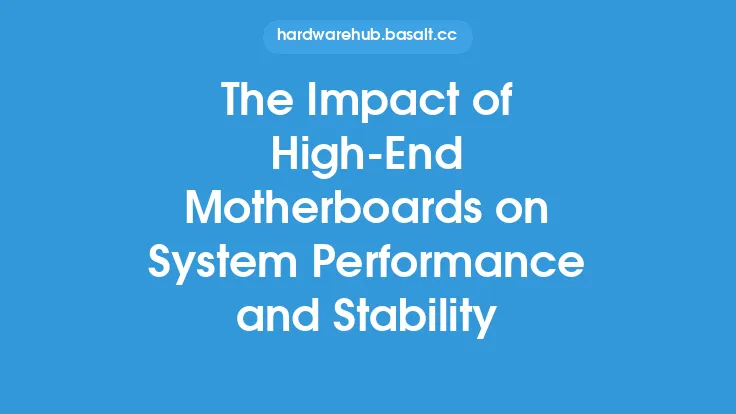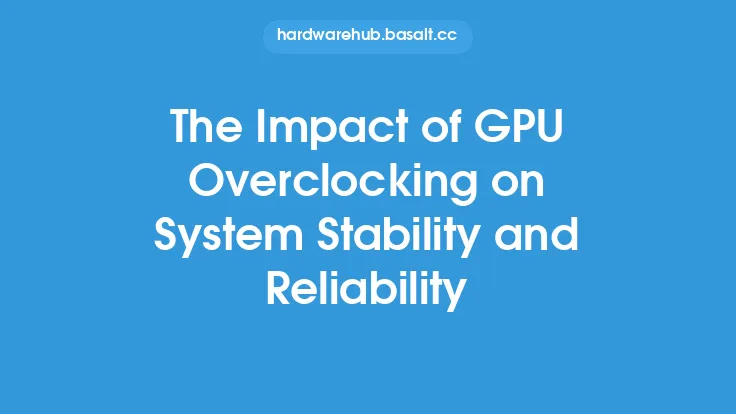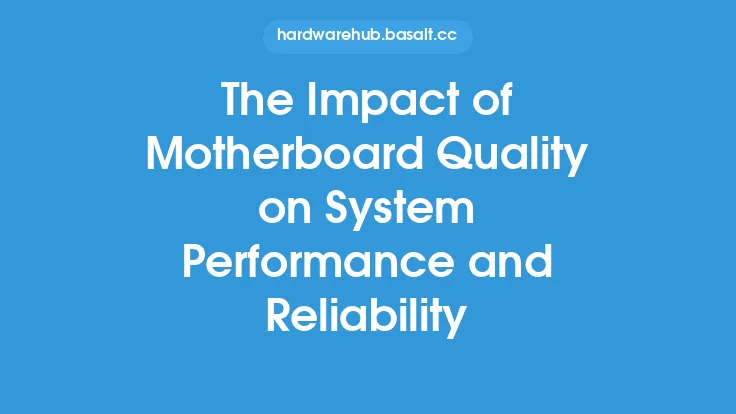The world of video editing and graphics design has undergone a significant transformation in recent years, driven in large part by advances in GPU performance. Graphics Processing Units (GPUs) have become an essential component of modern computing, enabling professionals and enthusiasts alike to create stunning visuals, edit complex video projects, and design intricate graphics with ease. In this article, we will delve into the impact of GPU performance on video editing and graphics design, exploring the key factors that influence performance, the benefits of high-performance GPUs, and the technical aspects of GPU architecture that make them so well-suited to these applications.
Introduction to GPU Performance in Video Editing and Graphics Design
GPU performance plays a critical role in video editing and graphics design, as it directly affects the speed, efficiency, and quality of the creative process. A high-performance GPU can significantly accelerate tasks such as video rendering, color grading, and visual effects, allowing professionals to meet tight deadlines and deliver high-quality results. In contrast, a low-performance GPU can lead to frustrating delays, reduced productivity, and compromised image quality. As such, understanding the factors that influence GPU performance in video editing and graphics design is essential for making informed decisions when selecting a GPU or configuring a workstation.
Key Factors Influencing GPU Performance
Several key factors influence GPU performance in video editing and graphics design, including clock speed, memory bandwidth, and the number of processing units. Clock speed, measured in GHz, determines how quickly the GPU can execute instructions and perform calculations. A higher clock speed generally results in better performance, but it also increases power consumption and heat generation. Memory bandwidth, measured in GB/s, determines how quickly the GPU can access and transfer data. A higher memory bandwidth enables the GPU to handle larger, more complex projects, and reduces the time spent waiting for data to be transferred. The number of processing units, including CUDA cores (in NVIDIA GPUs) or Stream processors (in AMD GPUs), determines how many tasks the GPU can perform simultaneously. A higher number of processing units enables the GPU to handle more complex tasks, such as 3D modeling and physics simulations.
Benefits of High-Performance GPUs
High-performance GPUs offer numerous benefits for video editing and graphics design professionals, including accelerated rendering, improved color accuracy, and enhanced visual effects. Accelerated rendering enables professionals to quickly preview and finalize their work, reducing the time spent waiting for renders to complete. Improved color accuracy ensures that the final product meets the highest standards of quality, with precise control over color grading, exposure, and contrast. Enhanced visual effects enable professionals to create stunning, realistic effects, such as explosions, fire, and water simulations, which can be used to enhance the visual impact of their work.
Technical Aspects of GPU Architecture
The technical aspects of GPU architecture play a crucial role in determining performance in video editing and graphics design. Modern GPUs are designed with a massively parallel architecture, which enables them to perform many calculations simultaneously. This is particularly useful for tasks such as video rendering, which can be broken down into many smaller, independent tasks. The GPU's memory hierarchy, including the L1, L2, and graphics double data rate (GDDR) memory, also plays a critical role in determining performance. The L1 and L2 caches provide fast access to frequently used data, while the GDDR memory provides a large, high-bandwidth storage space for textures, frames, and other data. Additionally, the GPU's command processor and execution units work together to manage the flow of data and instructions, ensuring that the GPU is always fully utilized and operating at peak efficiency.
GPU Performance in Video Editing
In video editing, GPU performance is critical for tasks such as video rendering, color grading, and visual effects. A high-performance GPU can significantly accelerate these tasks, enabling professionals to work more efficiently and deliver high-quality results. For example, the NVIDIA GeForce RTX 3080 GPU offers accelerated rendering performance, thanks to its Tensor Cores and ray tracing technology. The AMD Radeon RX 6800 XT GPU, on the other hand, offers improved color accuracy and enhanced visual effects, thanks to its Radeon Image Sharpening and Radeon Anti-Lag technologies. When selecting a GPU for video editing, professionals should consider factors such as clock speed, memory bandwidth, and the number of processing units, as well as the specific features and technologies supported by the GPU.
GPU Performance in Graphics Design
In graphics design, GPU performance is critical for tasks such as 3D modeling, physics simulations, and texture rendering. A high-performance GPU can significantly accelerate these tasks, enabling professionals to work more efficiently and deliver high-quality results. For example, the NVIDIA Quadro RTX 8000 GPU offers accelerated performance for 3D modeling and physics simulations, thanks to its Tensor Cores and ray tracing technology. The AMD Radeon Pro WX 8200 GPU, on the other hand, offers improved texture rendering and enhanced visual effects, thanks to its Radeon ProRender and Radeon Image Sharpening technologies. When selecting a GPU for graphics design, professionals should consider factors such as clock speed, memory bandwidth, and the number of processing units, as well as the specific features and technologies supported by the GPU.
Conclusion
In conclusion, GPU performance plays a critical role in video editing and graphics design, enabling professionals to work more efficiently and deliver high-quality results. By understanding the key factors that influence GPU performance, including clock speed, memory bandwidth, and the number of processing units, professionals can make informed decisions when selecting a GPU or configuring a workstation. The technical aspects of GPU architecture, including the massively parallel architecture and memory hierarchy, also play a crucial role in determining performance. As GPU technology continues to evolve, we can expect to see even more powerful and efficient GPUs, enabling professionals to push the boundaries of what is possible in video editing and graphics design.





